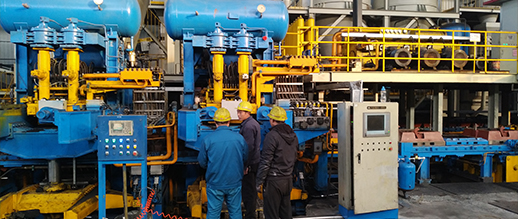
-
 Afrikaans
Afrikaans -
 Albanian
Albanian -
 Amharic
Amharic -
 Arabic
Arabic -
 Armenian
Armenian -
 Azerbaijani
Azerbaijani -
 Basque
Basque -
 Belarusian
Belarusian -
 Bengali
Bengali -
 Bosnian
Bosnian -
 Bulgarian
Bulgarian -
 Catalan
Catalan -
 Cebuano
Cebuano -
 Corsican
Corsican -
 Croatian
Croatian -
 Czech
Czech -
 Danish
Danish -
 Dutch
Dutch -
 English
English -
 Esperanto
Esperanto -
 Estonian
Estonian -
 Finnish
Finnish -
 French
French -
 Frisian
Frisian -
 Galician
Galician -
 Georgian
Georgian -
 German
German -
 Greek
Greek -
 Gujarati
Gujarati -
 Haitian Creole
Haitian Creole -
 hausa
hausa -
 hawaiian
hawaiian -
 Hebrew
Hebrew -
 Hindi
Hindi -
 Miao
Miao -
 Hungarian
Hungarian -
 Icelandic
Icelandic -
 igbo
igbo -
 Indonesian
Indonesian -
 irish
irish -
 Italian
Italian -
 Japanese
Japanese -
 Javanese
Javanese -
 Kannada
Kannada -
 kazakh
kazakh -
 Khmer
Khmer -
 Rwandese
Rwandese -
 Korean
Korean -
 Kurdish
Kurdish -
 Kyrgyz
Kyrgyz -
 Lao
Lao -
 Latin
Latin -
 Latvian
Latvian -
 Lithuanian
Lithuanian -
 Luxembourgish
Luxembourgish -
 Macedonian
Macedonian -
 Malgashi
Malgashi -
 Malay
Malay -
 Malayalam
Malayalam -
 Maltese
Maltese -
 Maori
Maori -
 Marathi
Marathi -
 Mongolian
Mongolian -
 Myanmar
Myanmar -
 Nepali
Nepali -
 Norwegian
Norwegian -
 Norwegian
Norwegian -
 Occitan
Occitan -
 Pashto
Pashto -
 Persian
Persian -
 Polish
Polish -
 Portuguese
Portuguese -
 Punjabi
Punjabi -
 Romanian
Romanian -
 Russian
Russian -
 Samoan
Samoan -
 Scottish Gaelic
Scottish Gaelic -
 Serbian
Serbian -
 Sesotho
Sesotho -
 Shona
Shona -
 Sindhi
Sindhi -
 Sinhala
Sinhala -
 Slovak
Slovak -
 Slovenian
Slovenian -
 Somali
Somali -
 Spanish
Spanish -
 Sundanese
Sundanese -
 Swahili
Swahili -
 Swedish
Swedish -
 Tagalog
Tagalog -
 Tajik
Tajik -
 Tamil
Tamil -
 Tatar
Tatar -
 Telugu
Telugu -
 Thai
Thai -
 Turkish
Turkish -
 Turkmen
Turkmen -
 Ukrainian
Ukrainian -
 Urdu
Urdu -
 Uighur
Uighur -
 Uzbek
Uzbek -
 Vietnamese
Vietnamese -
 Welsh
Welsh -
 Bantu
Bantu -
 Yiddish
Yiddish -
 Yoruba
Yoruba -
 Zulu
Zulu
Cost Analysis for Rear Brake Drums and Their Impact on Vehicle Maintenance Expenses
The Cost of Rear Brake Drums What You Need to Know
When it comes to vehicle maintenance, one critical component that often requires attention is the braking system. Among the various parts that make up this system, rear brake drums play a significant role, especially in vehicles equipped with drum brakes. Understanding the cost associated with rear brake drums is essential for vehicle owners who want to ensure their safety and the longevity of their vehicle.
What Are Rear Brake Drums?
Brake drums are part of the drum brake system, a type of braking mechanism that utilizes friction to slow down or stop a vehicle. While most modern vehicles use disc brakes for better performance, many still employ drum brakes on their rear axle. The drum itself is a cylindrical component that houses the brake shoes, which press against its inner surface to create the necessary friction for braking.
Factors Influencing the Cost of Rear Brake Drums
1. Material and Quality The cost of rear brake drums can vary considerably based on their material and quality. Typically, drums are made from cast iron or aluminum. High-performance drums designed for racing or heavy-duty use can be more expensive due to enhanced durability and heat dissipation properties.
2. Vehicle Make and Model The specific requirements for different vehicles also play a role in pricing. Some car manufacturers produce specialized brake components that may come at a premium cost. For instance, luxury or high-performance vehicles often have higher-priced aftermarket options.
rear brake drums cost

3. Brand Just like any other automotive part, the brand can significantly influence the price of rear brake drums. Well-known reputable brands often charge more, but they usually offer better quality and reliability. On the other hand, less recognized brands might offer lower prices but can compromise on durability and performance.
4. Labor Costs Beyond just the price of the parts, labor costs should be factored into the total expense. Replacing rear brake drums typically requires specialized knowledge and tools, and a reputable mechanic or service center may charge between $75 and $150 per hour for labor. The complexity of the brake system in some vehicles can also lead to higher labour charges.
5. Additional Parts and Services When replacing brake drums, other associated parts may also need to be replaced, such as brake shoes, wheel cylinders, and hardware kits. These additional components can increase the overall cost of the service. Moreover, brake fluid replacement and system bleeding are commonplace in these jobs, further adding to the expense.
Average Cost Breakdown
On average, the cost for rear brake drums can range from $40 to $150 per drum, depending on the aforementioned factors. If you include the labor for installation (which might take 1-3 hours), the total cost can range from $150 to $500. It's worth mentioning that while opting for a cheap solution might be tempting, investing in quality parts can lead to longer intervals between replacements and improved safety.
Conclusion
Understanding the costs associated with rear brake drums is crucial for vehicle maintenance. From the factors affecting pricing to the importance of investing in quality parts, knowledge is beneficial for making informed decisions. Regular maintenance of your braking system not only enhances safety but also contributes to better vehicle performance over time. If you're in doubt regarding brake issues, it's always wise to consult a professional to assess the condition of your drum brakes and ensure that your vehicle remains roadworthy.
-
What Are Drum BrakesNewsJul.07,2025
-
Understanding Brake Drum MaterialNewsJul.07,2025
-
Semi-Trailer Brake Drum: A Key Component for Extreme Loads and Long-Distance TransportNewsJul.07,2025
-
Drum Brake Pads for SaleNewsJul.07,2025
-
Brake Drums for SaleNewsJul.07,2025
-
Brake Drum ManufacturerNewsJul.07,2025
-
Aluminum Brake Drums: The Future of High-Performance CarsNewsJul.07,2025
